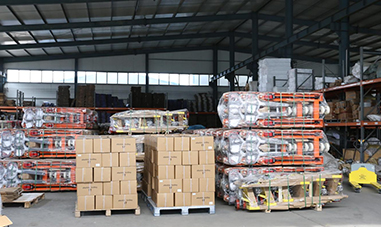


Manual Chain Block An Overview
In the realm of lifting and lowering heavy objects, the manual chain block stands out as a reliable and efficient tool. This equipment has been utilized in various industries such as construction, manufacturing, and warehousing. In this article, we will delve into the workings, advantages, applications, and safety measures associated with the manual chain block, particularly focusing on the 1-ton variant.
Understanding the Manual Chain Block
A manual chain block, also known as a chain hoist, is a mechanical device used for lifting heavy loads. It consists of a chain, a block (or pulley), and a ratchet mechanism. Unlike powered hoists, the manual chain block relies on human effort to operate. It is designed for loads up to a specific weight, with the 1-ton model being one of the most commonly used types.
The mechanism operates through the pulling of the chain, which in turn rotates the gears inside the block. As the chain is pulled, it lifts the load attached to the hook. Releasing the chain allows the load to descend gradually, thanks to the ratchet mechanism that prevents the load from dropping suddenly.
Advantages of Using a Manual Chain Block
1. Simplicity and Portability One of the primary benefits of a manual chain block is its straightforward operation. It does not require power sources or extensive training to use. This simplicity makes it an attractive choice for many workers, especially in remote locations where electrical power is not available. The compact design also allows for easy transportation from one site to another.
2. Cost-Effective Manual chain blocks are generally more affordable than their electric counterparts. The absence of electrical components and motors reduces maintenance costs and the likelihood of breakdowns, making them a financially sound option for businesses.
3. Durability Built with robust materials, manual chain blocks can withstand harsh working conditions and heavy use. Their longevity often exceeds that of powered hoists, making them a wise investment.
4. Versatility The 1-ton manual chain block can lift a significant range of items, from construction materials to machinery components. Its versatility allows it to be used in various fields, from industrial manufacturing to home improvement projects.
Applications of Manual Chain Blocks

The applications for a 1-ton manual chain block are vast. In construction sites, these devices are primarily used for lifting beams, girders, and other hefty materials into position. In manufacturing, they can be found lifting die castings or heavy machinery components during assembly. Warehouses often utilize chain blocks for unloading shipments or relocating heavy pallets.
Furthermore, the manual chain block is invaluable in automotive repair shops, where it can assist in lifting engines or other heavy parts for servicing. Its role in rescue operations, such as lifting stranded vehicles or clearing debris in emergencies, is also noteworthy.
Safety Measures
While manual chain blocks are robust and reliable, safety should always be a priority when using them. Here are some essential safety measures to consider
1. Inspection Before Use Always inspect the chain block for any signs of wear, damage, or deformation before attempting to lift a load. Ensure that the chain is properly lubricated and that the hooks are not bent.
2. Load Capacity Awareness Never exceed the 1-ton weight limit for the manual chain block. Understanding the weight of the load and ensuring it falls within the capacity of the device is crucial for safe operation.
3. Proper Technique Ensure that the chain is pulled smoothly and steadily to avoid sudden jerks that could cause the load to destabilize. Operators should maintain a clear path when lifting, ensuring no one is under the load during operation.
4. Personal Protective Equipment (PPE) Operators should wear appropriate safety gear, including gloves, steel-toed boots, and helmets, to protect against potential hazards.
Conclusion
The manual chain block, particularly the 1-ton variant, is an essential tool in various industries for lifting and moving heavy objects. Its simplicity, cost-effectiveness, durability, and versatility make it a preferred choice for many operators. However, understanding its proper use and adhering to safety measures is vital to prevent accidents and ensure efficient operation. Whether on a construction site, in a warehouse, or in an automotive shop, the manual chain block remains a trustworthy ally in managing heavy lifting tasks.



